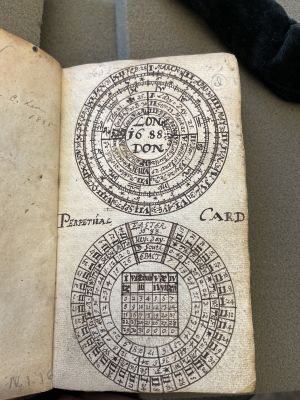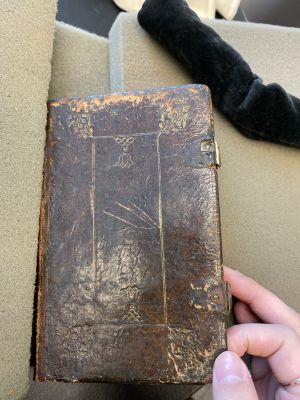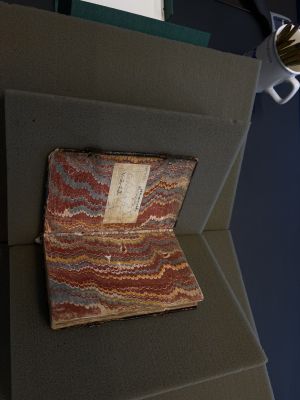Perpetual Card: Vaticinia Varia
Perpetual card: Vaticina Varia is a manuscript hand-written by an unknown author, detailing various fortune telling methods and astrological conventions. The name perpetual card means a perpetual calendar, sometimes also called an infinite calendar. This manuscript contains a calendar for the year of 1688, explanations on how to calculate the date for feasting and traditional holidays, as well as extensive examples and notes on astrological predictions. Perpetual card approaches the art of fortune-telling through numeric calculations, Christian traditions, and astrological observations. This manuscript was originally collected by the Henry Charles Lea Library, and now stored in theKislak Center for Special Collections, Rare Books and Manuscripts at the University of Pennsylvania.
Manuscript Structure

The book begins with a title page of a circle illustration with the words “London 1688” written in the middle (see photo 1.1). Numbers and dates surround the words in the middle. It is thus inferred that the manuscript was written in the year 1688, in London. However, this may not necessarily be the time that this manuscript was bound together into a notebook with gilt calf. From eye observation, the calf binding appears to be from a much newer date (see photo 1.2).

There is a possibility that the book may have been rebound again by the collector or later readers. The patterns on the calf are delicately pressed and adorned with gilt. On the right side, there appear to be two metal locks, perhaps purposed for locking the content of the book away from common readers. Whether these locks were initially created to be functional or ornamental remains a question. If these locks were functional, they, in part, reflect the nature and history of astrological fortune-telling. Manuscripts like these were not written for the masses but rather for a small number of people who studies the occult. The methods and calculations for astrological predictions were largely exclusive to certain groups of people and not easily accessible. At its present stage, the metal locks do not appear to retain any particular purpose (i.e. locking up the text).
Another reason the manuscript may be written and bound at different time periods is because of the marbled paper glued between the outer calf layer and the first page. This manuscript begins and ends with sheets of delicately-created marbled paper, consisting of deep red, sky blue, white, and light yellow oil colorings. This marbled paper is made in the nonpareil pattern, which was seen predominantly in 19th and 20th century. It may be suspected that the manuscript was first written in 1688, but later bound together into a notebook with a nice calf book cover by a collector, one or two centuries later. The date indicated on the title page clearly does not match that of the cover and the marbled paper.
